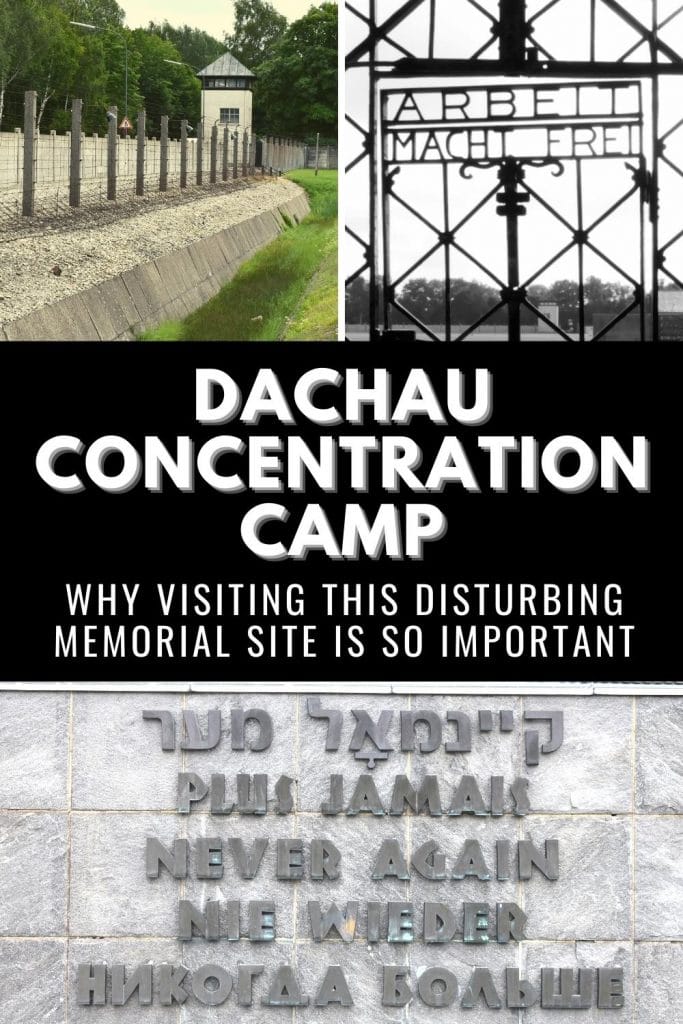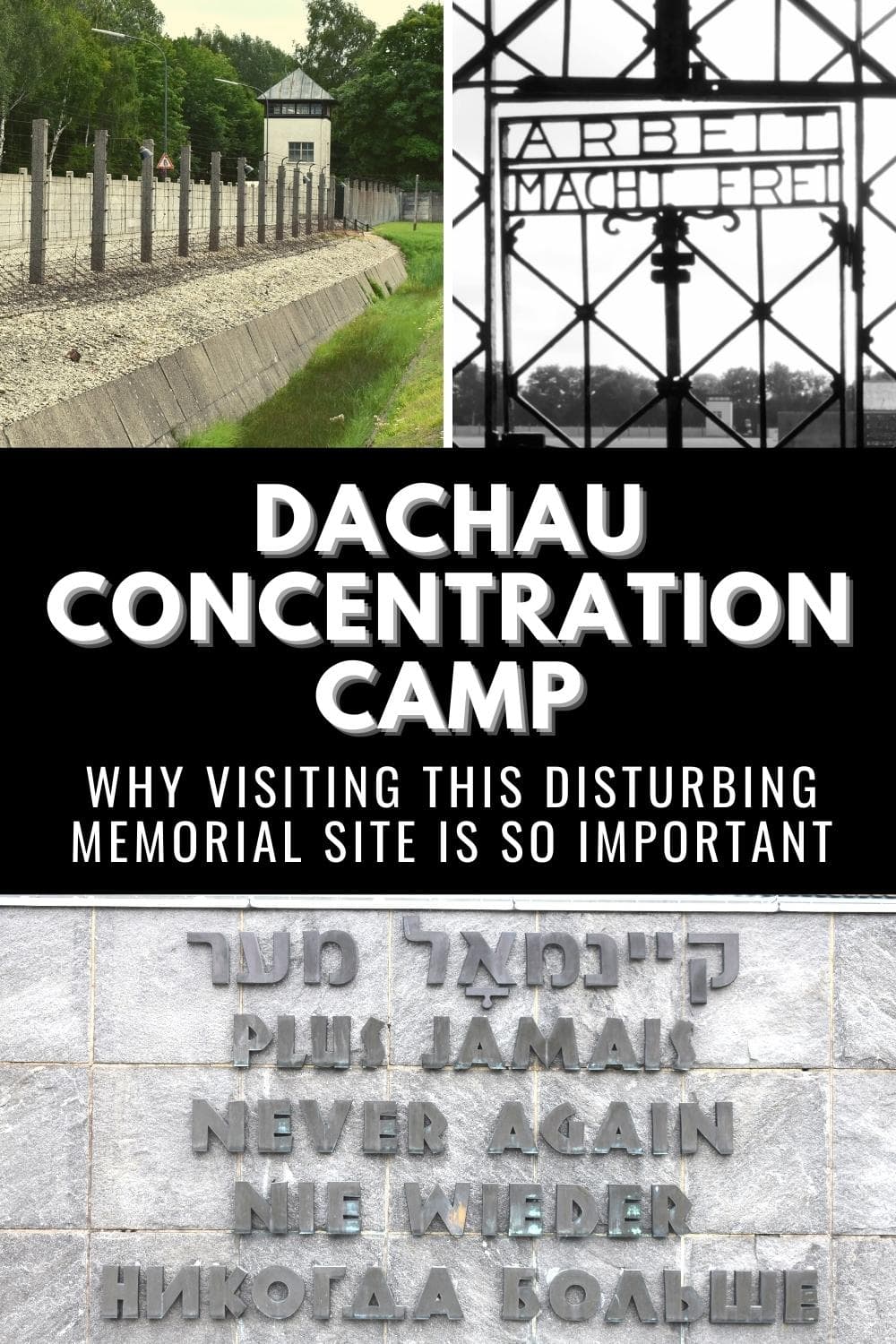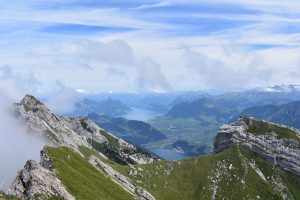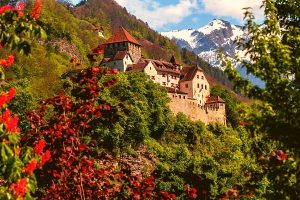Today, Dachau is a small, unassuming suburb outside of Munich, Germany, but it’s unfortunately known around the world for its former concentration camp, a permanent scar that will forever be linked with the area. Dachau was the very first Nazi work camp, the model from which all others were created.
Take a day trip to Dachau from Munich to learn about the camp’s dark past and to remember the thousands that suffered and died here. We’ll discuss why it’s important to visit a concentration camp memorial site, what to expect, and tips to know before you go.
This post may contain affiliate links. As an Amazon Associate and associate of other programs, I earn from qualifying purchases. This means if you click a link and make a purchase, I may earn a small commission at no extra cost to you.
Should I Visit a Concentration Camp Memorial Site?
Absolutely, visiting a concentration camp memorial is so important.
Visiting these historic sites are crucial to understanding history, and not dooming ourselves to repeat it, as well as remembering the thousands of people that suffered and died here.
It’s one thing to hear about it and read about it; it’s an entirely different experience to see it.
You cannot truly understand the scale of this atrocity until you’ve visited this site and stood in these enormous spaces, and then realized this is just one of dozens of concentration camps.
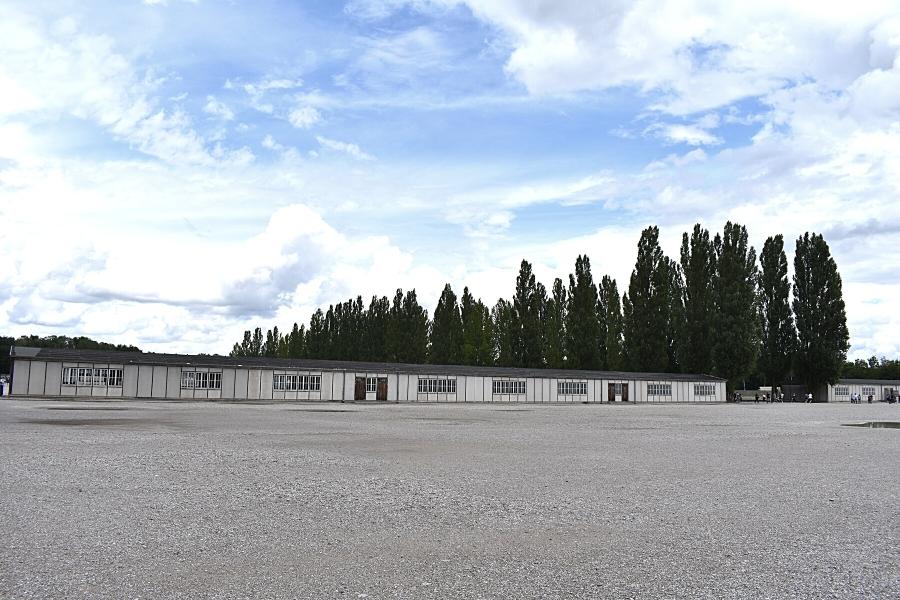
Things to Know Before Visiting a Concentration Camp Memorial
It goes without saying that this site has an exceptionally disturbing place in history. It can be emotionally draining to visit, particularly if you have a personal connection to the Holocaust.
The Dachau Memorial Site is no place for kids. Guided tours require age 13+, but younger children are allowed entry at their parent’s discretion.
The exhibits don’t hold back. You’ll see photographs and artifacts from when the camp was in operation, and this was a horrific place.
Emaciated bodies, torture instruments, and medical experimentation are just a few of the things you will see through photographs in the museum. Not to mention the crematoriums and gas chamber at the back of the property.
Know your own mental boundaries. Take breaks if you need them. Dark tourism can be difficult to experience, but it’s important that we have the opportunity to learn from these tragedies.
Moving Forward
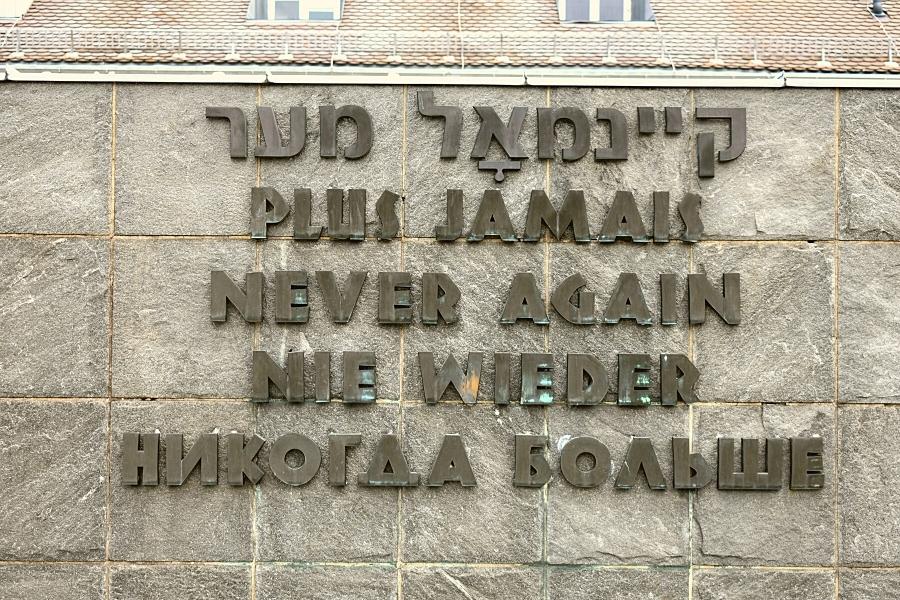
The main memorial here is a simple monument that says “Never Again” in multiple languages. The purpose of preserving this site, despite its terrible history, is so we can all recognize the atrocity and agree that it should never be allowed to happen again.
Believe it or not, there are people in the world that deny the Holocaust happened. Don’t get me started on those imbeciles…
I was impressed with how well and thoroughly Germany addresses World War II. There are Documentation Centers (museums) in practically every major city that each addresses a different facet of the rise and terror of the Nazi Party.
For example, the Nuremberg Documentation Center focuses on the Nuremberg political rallies of the 1930’s, and the Berchtesgaden Documentation Center focuses on the propaganda that elevated the Nazi leaders to fictional god status.
It’s compulsory for German students to learn this history, and these museums and memorials don’t sugar coat it or try to explain it away. The “we didn’t know what was going on” excuse isn’t tolerated in Germany anymore, and they’re educating future generations so it doesn’t happen again.
If you are traveling with kids, or know that visiting a concentration camp will be too much for you emotionally, try a different day trip from Munich.
How to Day Trip to Dachau from Munich
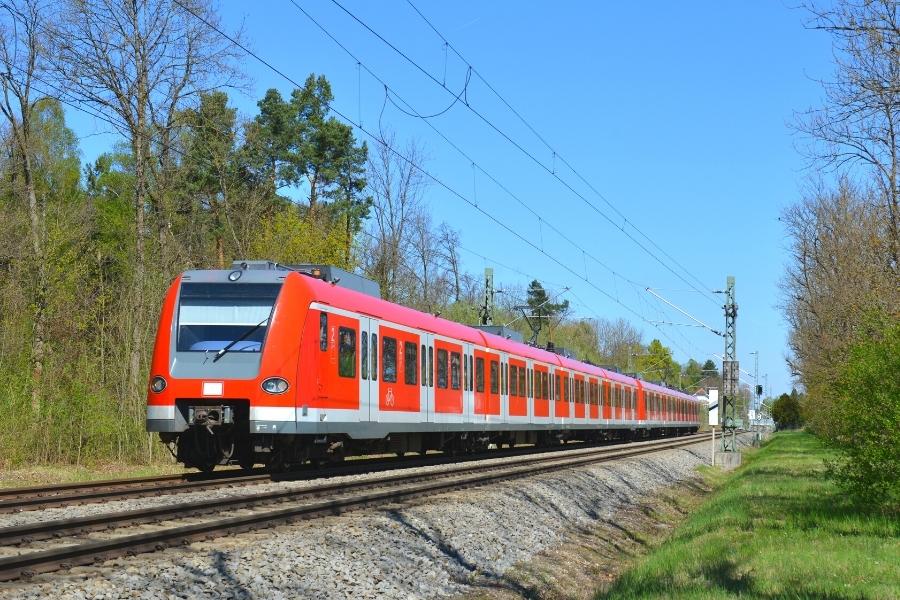
How to Get to Dachau from Munich
It’s an easy 2-step process to day trip to Dachau from Munich.
Step #1: Take the train, S-bahn line S2 in the west direction, to Dachau station.
Step #2: Exit the train and find Bus 726, right outside of the train station. The bus drops off at the memorial site front entrance.
Total travel time is 30 minutes from the Munich Central Station (Hauptbahnhof) to the memorial site front entrance.
There are other things to see in Dachau besides the camp memorial site, but most visitors are there for the camp. If in doubt about where to go, follow the crowd and then ask the bus driver if you’re still unsure.
Pro Tip: The Dachau Concentration Camp Memorial is called the KZ Gedenkstätte Dachau in German.
Both the Altomünster and Petershausen S2 trains will get you where you need to go as Dachau station is before the S2 line splits on the west side.
Do not get on the Erding S2 train as that is traveling east, the wrong direction for Dachau. You’re on the wrong platform if you’re seeing S2 trains for Erding.
Do not continue to the Dachau Stadt station on the Altomünster S2 line as Bus 726 doesn’t pick up from this station. It just adds another step to get to the memorial site.
What’s the Cheapest Way to Get to Dachau from Munich?
The S-bahn/bus combo is by far the fastest and cheapest way to day trip to Dachau from Munich.
The train system in Munich is extensive, reliable, cheap, and tickets usually include the land routes as well, like buses and trams. Group passes make train travel the most economical choice.
Which Munich Train Pass Should I Get?
If you’re staying in Munich for the day, grab an MVV Group Day Ticket.
It’s valid all day for unlimited rides in the specified area of validity for 2-5 adults. Kids ages 6-14 count as half an adult.
Dachau station is on the edge of Zone 1 & 2, so purchasing a ticket with area of validity M-1 is sufficient to get you there.
If you’re staying in the Bavaria region but are leaving the Munich area, grab a Bayern Pass.
This is the best option if you’re visiting Dachau in the morning and then heading somewhere else in Bavaria for the night, like Nuremberg, Füssen, or even Salzburg, Austria.
Other Transportation Options
If you have a rental car, the drive to Dachau from central Munich is about 30 minutes, depending on traffic. Note there is a parking fee for the memorial site’s parking lots.
However, this only makes sense if you’re exploring Dachau in the morning and then continuing on away from Munich in the afternoon and not returning that evening.
The cost of renting the car is not worth it, unless you have a bucket list wish to drive on the autobahn.
If you’re looking for a guided tour to Dachau from Munich, don’t waste your money.
Unless you are a World War II enthusiast who really wants a one-on-one private tour, this is a waste of money for the following reasons:
- Many private tours travel to Dachau via the same S2 train/Bus 726 route that you can easily take yourself. The rest use buses which often take longer due to traffic.
- The memorial site offers guided tours twice a day in English for only €4 per person, much cheaper than a private tour will charge.
- If the private tour guide is not a registered licensed guide, the memorial site can end your group tour and you will possibly lose your money, unless the private guide agrees to refund you.
A Day Trip to the Dachau Concentration Camp Memorial Site: What to Expect
The following information is useful for those taking a self-guided tour of Dachau.
Note that entry is completely free.
The only fees are for audio guides, guided tours, or visitor parking, but none of these are strictly necessary. A free visit includes the museum exhibits and plaques around the property, which have English translations.
Each location on the property is listed with a brief description and approximate time commitment, to help you gauge how long you need for your visit to Dachau.
Main entrance/Visitor Center/Cafe/Gift Shop
Bus 726 drops off at the entrance to the Dachau Concentration Camp Memorial Site, outside of the traditional boundary of the camp.
A modern glass building houses the ticket desk, the gift shop, and a small café. This is also where you’ll find the restrooms, pick up an audio guide, or book a spot in a guided tour.
The gift shop is mostly books from Holocaust survivors and historical accounts discussing World War II in general.
Time: minimal, 5-10 minutes unless stopping to eat
The entry path and the train station ruins
Walk down the paved path to the gatehouse. This path was a guarded road for prison guards and administrators, not for new prisoners.
The majority of prisoners arrived via the train station just steps from the gatehouse. As you approach the gatehouse, first turn to the left and walk a bit to see the ruins of the train station platform.
Time: minimal, 5-10 minutes walking
The Gate House and its infamous gate
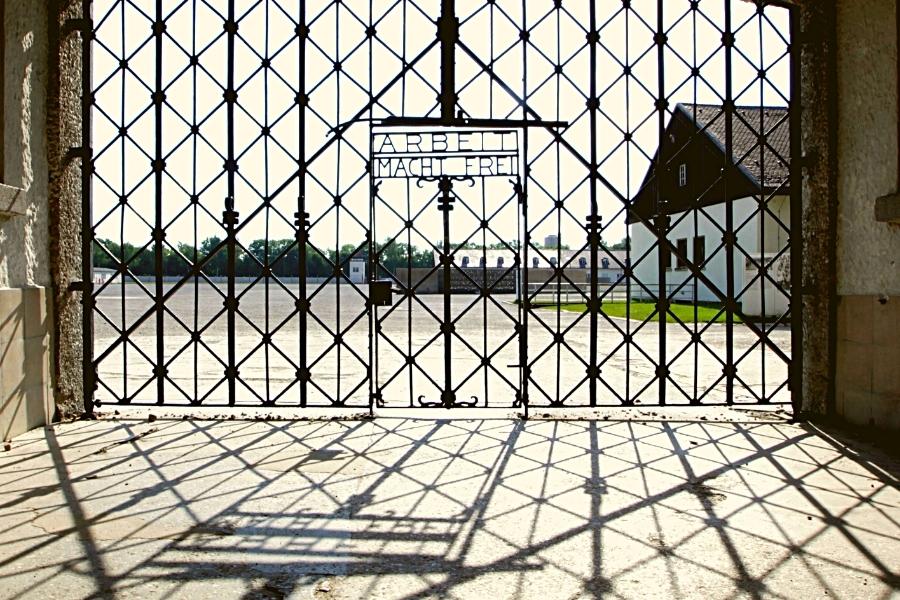
Most widely known from the gate at the Auschwitz concentration camp, Dachau first had a gate with the phrase “Arbeit Macht Frei,” or “Work Sets You Free.”
The original gate was inexplicably stolen in 2014, but found and returned two years later. It’s now on display in the museum, and a replica is used at the gatehouse. It’s still chilling to see.
A large exhibit board at the entrance provides a more detailed background of the gatehouse before you walk through the infamous gate and into the camp.
Time: 5 minutes
Registration Building (main museum)
The bulk of the historical information is in the museum in the Registration Building. The large building at the front of the camp was the first stop for new prisoners.
Exhibits begin with an introduction to the rise of the Nazi Party and continues through 13 rooms, which used to house registration, maintenance, offices, and the baths. Proceed through the building, learning as you go:
- the prisoner registration and records process,
- the evolution of the standards of imprisonment,
- the rise of the cruelty of the SS guards,
- the overpopulation of the camp,
- torture tactics used on prisoners,
- medical experimentation performed on prisoners, and
- the inevitable fall of the Third Reich and arrival of the US Army to liberate the camp.
There’s A LOT of information here. Skimmers will get through faster, and those that read all the plaques will take longer.
Time: 2-3 hours
The Camp Prison, aka “The Bunker”
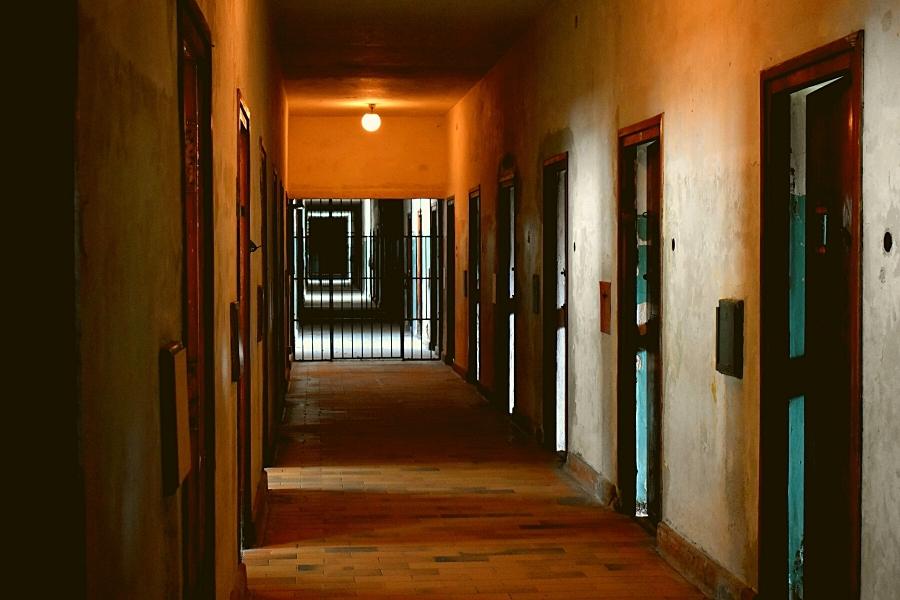
A source of terror for the camp, the prison was where the SS punished insubordinate prisoners and held others awaiting executions.
High-profile prisoners like Georg Elser, the man who almost assassinated Hitler with a homemade bomb, were held in traditional style jail cells before being executed.
Other cells were made so small that prisoners couldn’t even sit down and were forced to stand for days on end with food only provided every 4 days.
This is where the SS earned its reputation for cruelty, and fear of the camps started to spread.
Time: 30 minutes
The Fence
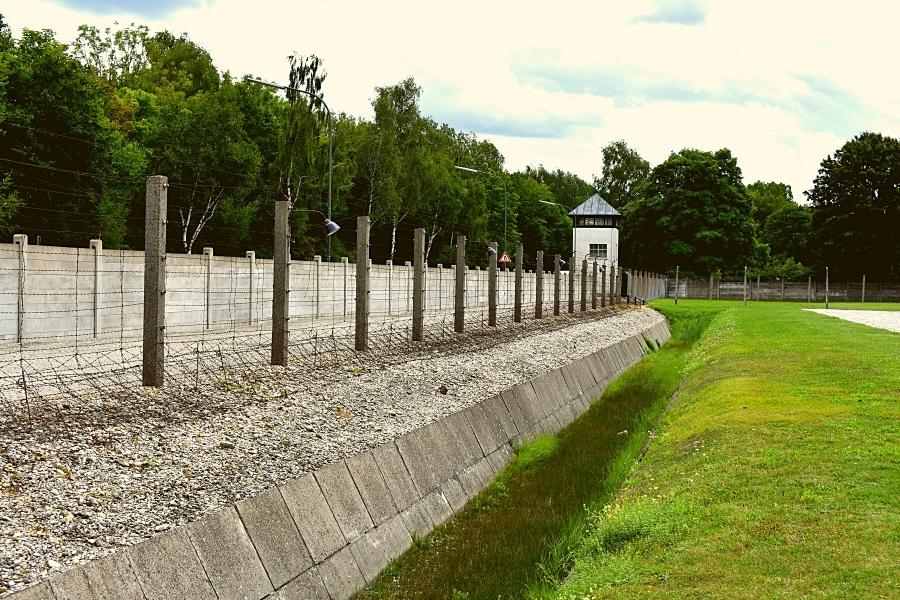
Two sections of the barbed wire perimeter fence were fully reconstructed when the site became a memorial.
If prisoners got too close, they were shot. Sometimes, guards would push prisoners onto the grass strip just so they “had an excuse” to shoot them.
Tall watch towers with spotlights stood guard at night. Filth-filled concrete ditches at the base of the fence completed the gauntlet. Escape was not an option through this fence.
Time: no more than 5 minutes to walk to it and read the plaque
Roll Call Yard
A somber, empty gravel yard today, the large space really brings home just how many people were imprisoned here.
Time: minimal, a few minutes as you walk across to the barracks
Walk through the Barracks
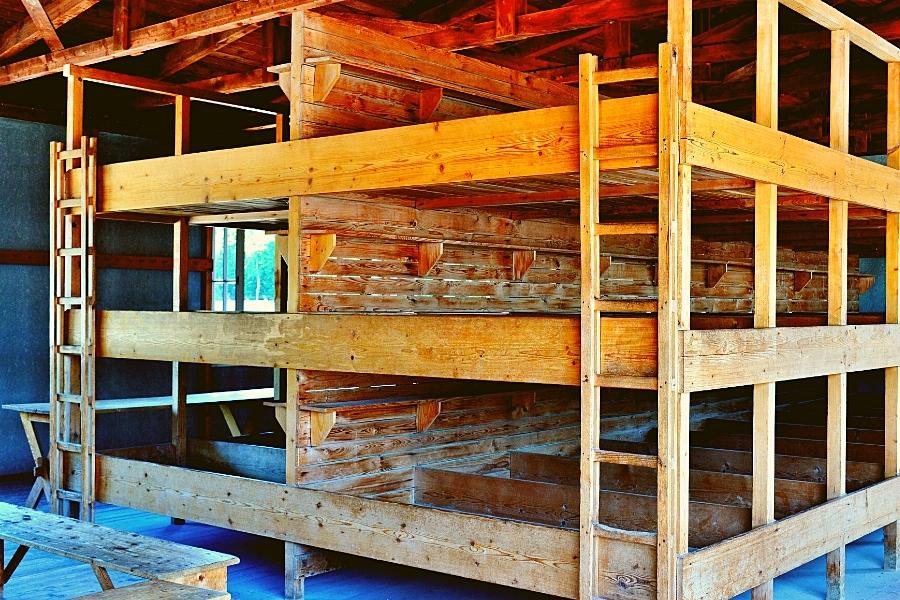
Because Dachau was around for so long, the barracks went through a few renovations over the years.
The 34 original barracks were all demolished in the 1960’s, but the foundation outlines remain and two replica buildings were reconstructed at the front.
The camp was often way beyond official capacity but that didn’t stop them from continuing to funnel in prisoners. The barracks show the evolution of the living conditions endured by prisoners.
Time: 15-20 minutes + 5-10 minutes walking down the center camp road to the religious memorials at the back of the property
See the Religious Memorials
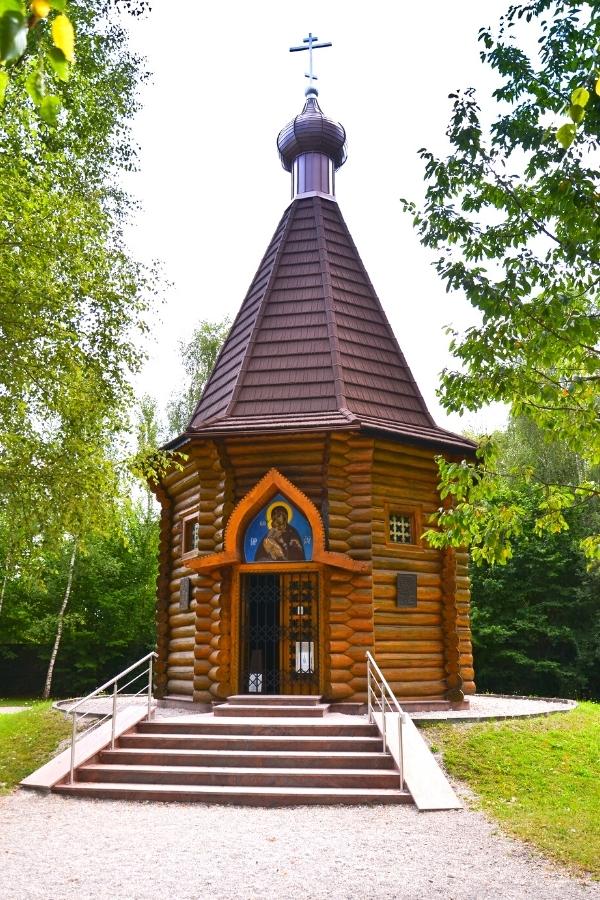
Religious memorials line the back wall of the property: one Catholic, one Protestant, and one Jewish. On property behind the camp is a Catholic convent church.
As you walk to the back left corner, towards the crematoriums, you’ll pass the Russian Orthodox church memorial, in recognition of the many Soviet prisoners-of-war that were murdered here.
Time: 15-20 minutes
See the Crematoriums and the Gas Chamber
The most disturbing part of the property is in the back corner, beyond the fence and enclosed by tall trees: the crematoriums and gas chamber.
Originally, one small crematorium disposed of inmates that died from being overworked and underfed. As the inmate population soared and war waged, the original crematorium couldn’t keep up.
So, they built a bigger one.
The second crematorium also had a small gas chamber attached, masquerading as a shower room as it would do at other camps. The Nazis experimented with gassing at Dachau before they perfected their formula and used it in mass at extermination camps.
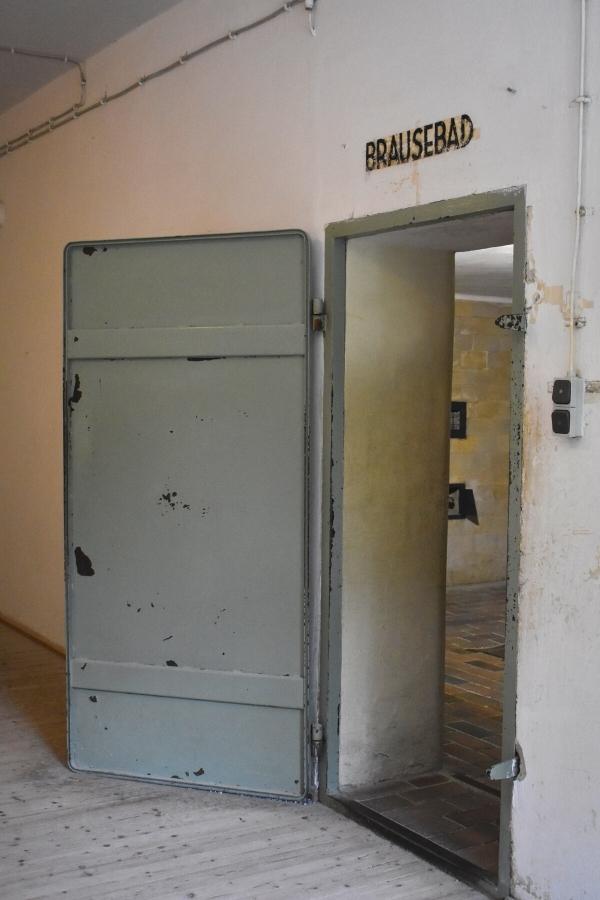
Dachau was never a full-blown extermination camp; it was a work camp. The end result, however, was the same.
Walk the wooded area near the crematoriums and find the memorials. Several groups of inmates were killed in mass back here, once the Nazis knew the end was coming.
Time: 30-45 minutes, including walking the wooded area to see the memorials
Tips for Visiting the Dachau Memorial Site
A few useful tips and reminders for planning your visit to Dachau:
- Free entry for self-guided tours. The museum plaques all have English translations and thoroughly cover the timeline of the camp.
- However, if you prefer to listen rather than read, there is a small fee for an audio guide or guided tour.
- Tours in English are only held twice a day and cannot be reserved online ahead. Go early and check in at the Visitor Center when you arrive.
- Be respectful. No stupid selfies or poses. Note how quiet this space is, out of respect.
- Lots of walking. Wear comfortable walking shoes to get around the mostly gravel-surfaced property.
- Bring water and sun protection/a hat. The roll call yard and where the barracks once stood are both now large, open, unshaded areas, and it gets hot in the summer.
- Photography (no flash) is allowed.
- Small bags are allowed inside the museum. Bring a small day bag for carrying water and a hat.
- Beware of information overload. The exhibits are incredibly thorough. If you read every plaque, it’ll take most of the day just to get through the museum.
- Allot a minimum of 4 hours for a visit. This allows enough time to see everything and read most of the plaques in the museum.
Visiting the Dachau Concentration Camp Memorial Site is an easy day trip from Munich, and a somber and haunting memorial that everyone should visit.
If you’re interested in more World War II history, consider day trips to Nuremberg or Berchtesgaden.
Nuremberg’s Documentation Center is located at the old Nazi Party Rally Grounds and Zeppelin field, and the Nuremberg Palace of Justice is where the Nuremberg Trials were held at the end of WWII.
Berchtesgaden is home to the Eagle’s Nest, once Hitler’s mountaintop chalet and now a restaurant open to the public. The Documentation Center provides access to the underground bunker and tunnel system that once connected Nazi administration buildings.
If you need a break from all the depressing Nazi history, take a day trip to Neuschwanstein Castle in Füssen, and see the castle that inspired Walt Disney’s Magic Kingdom Castle.
Or, spend a day in Salzburg, Austria soaking in classical music and its UNESCO World Heritage Site Old Town, an easy day trip from Munich.
Happy travels!

About the Author: Rachel Means
With six-figure student loan debt and only 10 PTO days per year, Rachel started traveling the world. A decade later, she’s paid off her loans, changed careers, and been to 36 US states and 14 countries. She’s an expert at planning and budgeting for travel and loves to help others do it, too! Read her full story here.
Share it!
